1. Blaze Star
The upcoming explosion of "Blaze Star" (T Coronae Borealis), a rare celestial event, will be visible to the naked eye for the first time since 1946. This event highlights the dynamic nature of the universe and the complex processes governing stellar evolution.
- It is officially known as T Coronae Borealis (T CrB), is a dim star located 3,000 light-years away from our solar system.
- It is found in the constellation Corona Borealis (the “Northern Crown”).
- The Blaze Star is a rare example of a recurrent nova, occurring once in every 80 years.
- Stellar components: The nova involves a binary star system comprising a white dwarf and a red giant.
- The white dwarf draws material from the red giant, leading to periodic explosive increases in brightness.
- The explosion occurs when the red giant’s surface temperature escalates dramatically, causing it to shed material onto the white dwarf, which then ignites a thermonuclear explosion.
- The upcoming stellar explosion is expected to be visible with the naked eye and shine as brightly as Polaris, the North Star, for about a week.
- NASA predicts this event to occur sometime between now and September of 2024.
- Past notable eruptions of T CrB were recorded in the years 1946 and 1866, with earlier documented observations dating back to 1787 and 1217.
- Frequency and Impact: Novae like T CrB occur once every few decades to a century, differing from supernovae in scale, frequency, and consequences.
- Unlike supernovae, novae do not destroy the star system but allow it to reset and repeat the cycle.
2. Zircon mineral
The study of zircon crystals has revealed that Earth had the necessary conditions to support life much earlier than previously thought. It reveals the early interaction of water and land, challenging existing theories of a water-covered Earth.

About Zircon materials:
- Zircon is a mineral belonging to the group of nesosilicates. Its chemical name is zirconium silicate and the chemical formula is ZrSiO4.
- Properties: Zircon crystals are notable for their high refractive indices and strong lustre.
- They are naturally occurring in a variety of colours, including clear, green, red, yellow and brown.
- Geological significance: Zircon is used for radiometric dating due to its trace uranium content, allowing precise age determination.
- Its high resistance to weathering makes it valuable for studying sedimentary and metamorphic rock history, providing insights into geological and crustal development over billions of years.
- Zircon grains are important for studying early Earth conditions. They can preserve isotopic signatures that provide insights into the environment and temperatures of ancient Earth.
- Zircon crystals found in the Jack Hills in Western Australia's Midwest can be up to 4.4 billion years old, providing insight into early Earth.
- Findings: The study of oxygen isotopes in zircon crystals reveals the presence of fresh water and dry land on early Earth, challenging existing theories of a water-covered Earth.
- This interaction may have created conditions conducive to life, with the water cycle operating at least 4 billion years ago.
3. “None Of The Above” (NOTA) option
The "None of the Above" (NOTA) option has emerged as the runner-up in Madhya Pradesh's Indore constituency, securing a record-breaking 2,18,674 votes, the highest-ever tally. About NOTA (None of the Above)
About NOTA (None of the Above)
 About NOTA (None of the Above)
About NOTA (None of the Above)- It is a voting option on the ballot that allows voters to indicate disapproval of all contesting candidates without choosing any of them.
- NOTA empowers the electors to express their negative opinions and a lack of support for the contenders.
- It gives them the right to reject while maintaining the secrecy of their decision.
- When was it first used?
- NOTA was used for the first time in the 2013 Assembly elections in five states-Chhattisgarh, Mizoram, Rajasthan, Delhi and Madhya Pradesh-and later in the 2014 General Elections.
- It was introduced into the electoral process following the 2013 Supreme Court directive in the PUCL versus Union of India case.
- Does NOTA Vote Count?
- The Election Commission clarified that votes cast as NOTA are counted, but are considered ‘invalid votes’.
- Even if NOTA votes get the most number of votes in a constituency, the next candidate with the second-most number of votes is declared the winner.
- Therefore, votes made to NOTA do not change the outcome of an election.
- Current Petition: The Supreme Court is considering a petition to frame guidelines for elections to be declared "null and void" if NOTA receives the highest number of votes in the constituency.
4. A newfound protein called 'Neo'
Recent research has discovered a novel protein, referred to as "Neo," which plays a critical role in bacterial defence mechanisms against viral infections, particularly bacteriophages.
 About Neo:
About Neo:
- Discovery of 'Neo': It was reported by researchers led by Stephen Tang and Samuel Sternberg in a 2023 preprint paper on bioRxiv while working on Klebsiella pneumoniae.
- Mechanism: Bacteria defend themselves from viral infection (against bacteriophages) using diverse immune systems, many of which sense and target foreign nucleic acids. Defense-associated reverse transcriptase (DRT) systems are one of them.
- In the DRT-2 system, the bacteria undergo de novo gene synthesis via rolling-circle reverse transcription (RT) of a non-coding RNA (ncRNA).
- In uninfected bacterial cells, the ncRNA and RT enzyme lead to the synthesis of a repetitive single-stranded cDNA.
- The presence of phage triggers the second-strand cDNA synthesis, leading to the production of long double-stranded DNA.
- This double-strand cDNA generates messenger RNAs that encode a stop codon-less, never-ending open-reading frame (neo) whose translation (neo protein) causes potent growth arrest (cell dormancy) of bacteria. It protects the larger bacterial population from the spread of phage.
- Significance in Biotechnology and Medicine:
- It represents a potential biotechnological tool for controlling viral infections.
- Retroelements in the human genome and bacterial reverse transcriptases have a common evolutionary history as well as share functional mechanisms.
- Bacterial reverse transcriptases, believed to be the precursors of their eukaryotic counterparts, exhibit analogous mechanisms.
- Reverse transcriptase:
- The ability of cells to create DNA copies from RNA is called reverse transcription. It is performed by the enzyme called reverse transcriptase.
- Reverse transcriptase, discovered by Howard Temin and David Baltimore in 1970, has revolutionised research methods in molecular biology and is crucial in studying and managing RNA viruses like HIV.
- Reverse transcriptase is used in molecular biology to clone genes, perform PCR, and analyse genomes.
- It is also used in diagnostics to detect and quantify viral loads, such as in the case of SARS-2. It also has helped track the virus’s spread, paving the way for surveillance, better public healthcare, and vaccine development.
5. Parengyodontium album
A marine fungus called Parengyodontium album has been discovered to break down plastic polyethene (PE) in the ocean. About Parengyodontium album:
About Parengyodontium album:
 About Parengyodontium album:
About Parengyodontium album:- It is a marine fungus that can break down plastic polyethene (PE), the most common plastic in the ocean.
- It was discovered by Marine microbiologists from the Royal Netherlands Institute for Sea Research (NIOZ).
- In this bioremediation process, the PE-derived carbon is converted into the fungal biomass of album, serving as its energy source.
- Initial photodegradation of PE by UV sunlight is crucial for this process. It makes the fungus useful to degrade the floating oceanic plastic litter.
- Humans produce over 400 billion kilograms of plastic annually, much of which ends up in the ocean.
- Considering fungi as the ‘masters of degradation’ that they utilise a plethora of digestive enzymes for plastic degradation, researchers expect that there could be more plastic-degrading fungi in the deeper parts of the ocean.
6. What is Minuteman III?
The US recently conducted an unarmed Minuteman III intercontinental ballistic missile test from the Californian Vandenberg Space Force Base.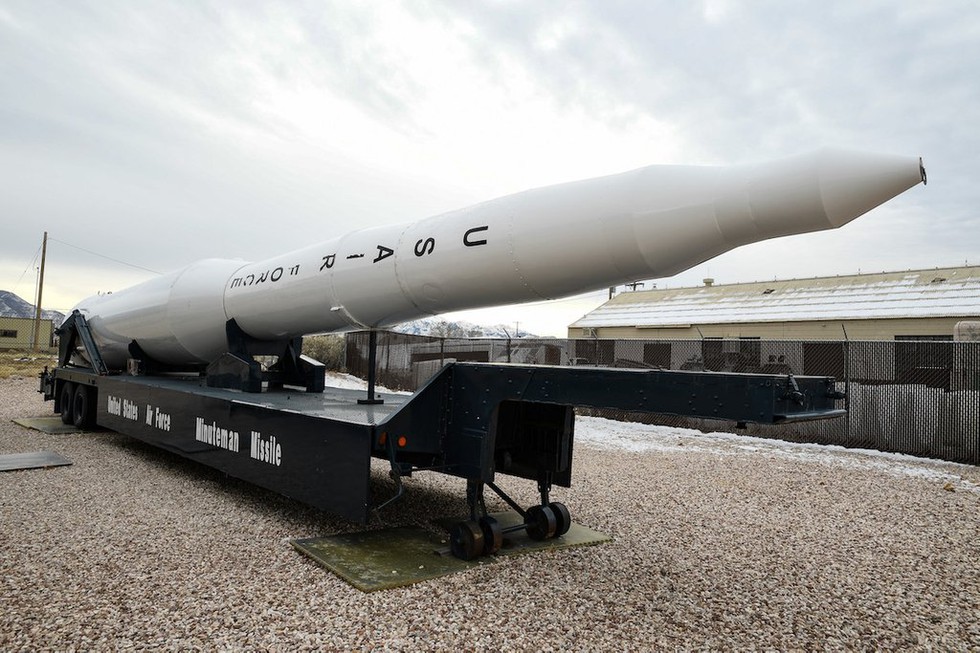 About Minuteman III:
About Minuteman III:
 About Minuteman III:
About Minuteman III:- The LGM-30G Minuteman III is a solid-fueled, intercontinental ballistic missile (ICBM), which the United States Air Force (USAF) first deployed in the 1960s.
- It is the sole land-based component of the S. nuclear triad.
- It was designed and manufactured by the Boeing Corporation.
- Originally, it was only supposed to be kept in service for about ten years, but instead, it has been modernized as its replacement, the Ground-Based Strategic Deterrent (GBSD), is due to become available for use in 2029.
- It was the first U.S. missile fitted withmultiple independently targetable reentry vehicles (MIRVs).
- The United States currently has an estimated 440 Minuteman III missiles in its arsenal.
- Features:
- It is a three-stage, solid-fuel missile.
- The missile is 18.2 m long with a diameter of 1.85 m and a launch weight of 34,467 kg.
- It has a maximum range of 13,000 km and is capable of carrying a payload of three reentry vehicles.
- It now carries a single nuclear warhead pursuant to arms control agreements between the United States and Russia.
- It has a fast launch time, nearly 100 percent testing reliability, and backup airborne launch controllers to preserve retaliatory capabilities.
7. Key Facts about Dnipro City
Russian missile attack on the central city of Dnipro injured seven people, including two children, and damaged civilian infrastructure recently.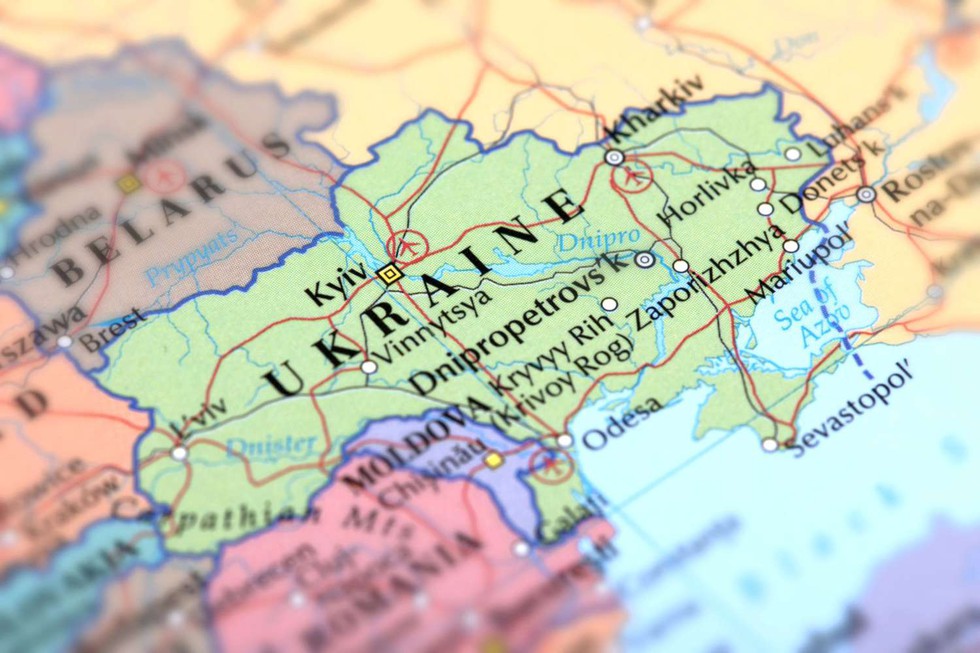 About Dnipro:
About Dnipro:
 About Dnipro:
About Dnipro:- Formerly referred to as Dnipropetrovsk, Dnipro is a city of regional significance located in the Dnipropetrovsk Oblast, in the eastern portion of Ukraine.
- It covers an area of 409,718 sq. km and is situated along both the banks of the Dnieper River, close to its meeting point with the Samara River.
- The city center stands on the right bank, which forms a part of the Dnieper Upland, while the left bank forms a part of the Dnieper Lowland.
- It is the country's fourth-biggest city after the cities of Kyiv, Kharkiv, and Odesa.
- As of 2021, the city of Dnipro had a population of 980,948 inhabitants.
- It is considered one of the principal industrial centers of Ukraine.
- The city hosts several facilities devoted to heavy industries producing various products, including launch vehicles, rolled metal, cast iron, machinery, agricultural equipment, different chemicals, etc.
Key Facts about Dnieper River:
- It is the fourth-longest river in Europe(after the Volga, the Danube, and the Ural).
- In Russian, the river’s name is Dnepr. In Ukrainian, it is Dnipro, and in Belarusian, it is Dnyapro.
- Located in Eastern Europe, the Dnieper River and its tributariesdrain much of Belarus and Ukraine.
- Course:
- It originates in Russia, in the low Valday Hills,west of Moscow.
- It runs a total length of 1,368 milesthrough western Russia, Belarus, and Ukraine before emptying into the Black Sea.
- It passes through numerous urban centers,such as the Russian cities of Smolensk and Dorogobuzh, as well as Mogilev in Belarus and Kiev, Cherkasy, Dnipro, and Zaporizhia in Ukraine.
- Historically, the river was an important barrier dividing Ukraine into right and left banks.
- Tributaries: It has as many as 32,000 tributaries, including the Sozh, Desna, Trubizh, Bilozerka, Drut, Berezina, and Prypiat rivers.
8. Key Facts about Rhine River
Parts of the Rhine River in southern Germany were closed to cargo shipping recently after heavy rains raised water levels.
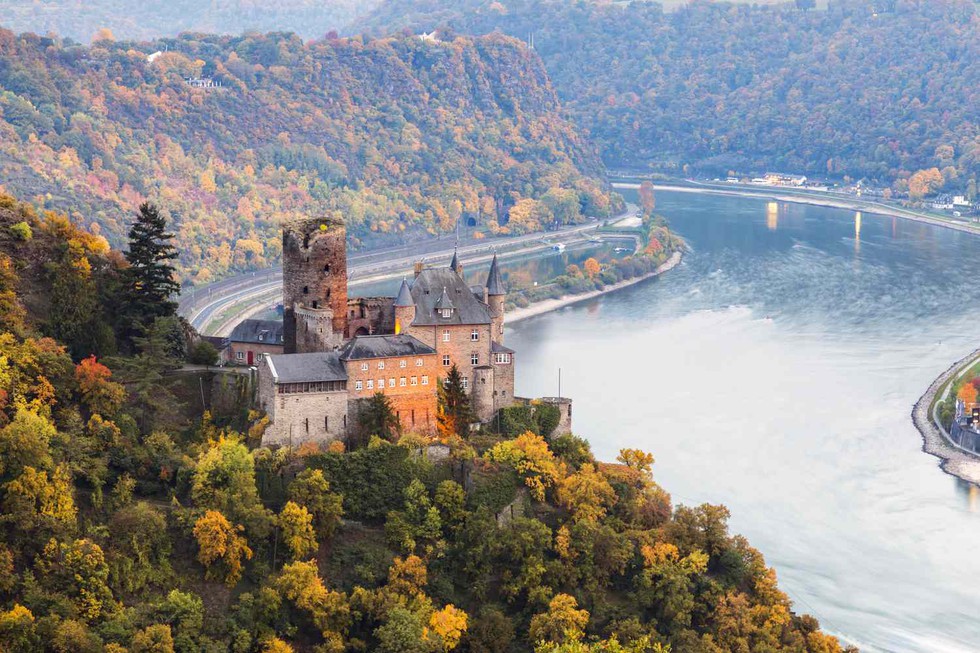 About Rhine River:
About Rhine River:
- It is the 12th longest river in Europe and the longest in Western and Central Europe.
- It is called different names depending on the country it flows through. It is called Rhein in Germany, Rhine in France, and Rijn in Netherlands.
- It runs for over 1,232 km (766 miles) from its source in the Swiss Alps (in Switzerland).
- It flows through six countries-Switzerland, Principality of Liechtenstein, Austria, Germany, France and the Netherlands before flowing into the North Sea at Rotterdam, Netherlands.
- The Rhine forms a natural border between Germany and France.
- The river drains an area of about 185,000 square kilometres.
- Tributaries: Some of the notable tributaries of the Rhine River include Aare, Tamina, Moselle, Erft, Rein da Tuma, Plessur, Rotach, and Wiese.
- It is Europe's most important commercial waterway, channeling the flow of trade among Switzerland, France, Germany, and the Netherlands.
- The major cities along the Rhine include Basel (Switzerland), Cologne, Bonn, Duisburg, Mainz, Leverkusen, and Neuss (Germany), Strasbourg (France), and Rotterdam and Utrecht (Netherlands).
- It facilitates industrial transportation and supports industrial production, with about 20% of the world’s chemical industries manufacturing along the river.
9. What is Tmesipteris oblanceolate?
New research shows that a fork fern species, called Tmesipteris oblanceolata, has a genome that is 7% larger than that of the previous record-holder, the Japanese flowering plant Paris japonica, and more than 50 times the size of the human genome.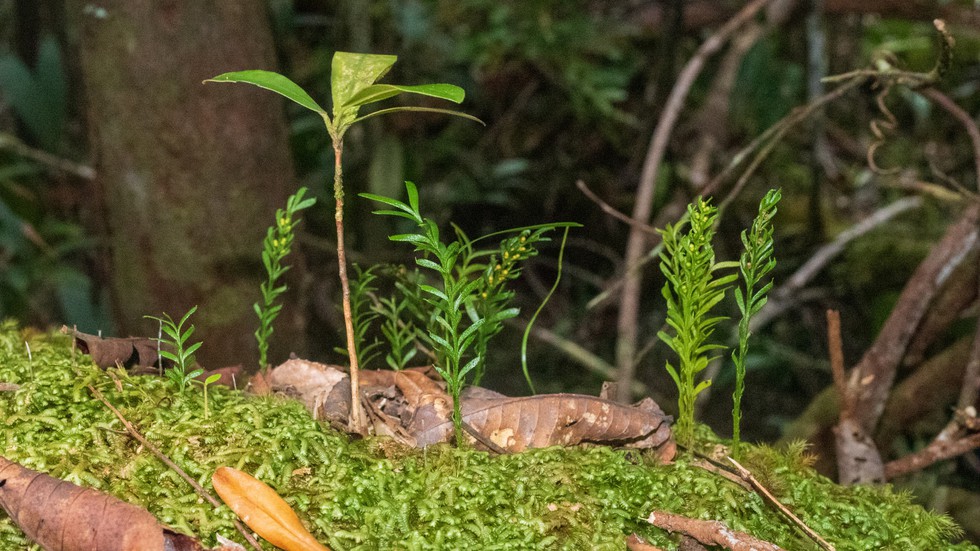 About Tmesipteris oblanceolate:
About Tmesipteris oblanceolate:
 About Tmesipteris oblanceolate:
About Tmesipteris oblanceolate:- It is a rare species of fern which grows primarily on the ground or atop fallen tree trunks on the island nation of New Caledonia (an overseas French territory situated in the Southwest Pacific), and on neighboring islands such as Vanuatu.
- It is a small plant, typically 10-15 centimeters (4-6 inches) in height.
- It has a record-breaking genome size of 160.45 billion base pairs (Gbp), the units that make up a strand of DNA, 11 billion more than the previous record holder, the Japanese flowering plant Paris japonica, and 50 times more than the human genome.
- If stretched out like from a ball of yarn, the length of the DNA in each cell of this fern would extend nearly 350 feet (106 meters). The human genome would extend a mere 6-1/2 feet (2 meters).
- Tmesipteris is a small genus of ferns whose ancestors evolved about 350 million years ago — well before dinosaurs set foot on Earth.
- It is distinguished by its mainly epiphytic habit (it grows mainly on the trunks and branches of trees) and restricted distribution in Oceania and several Pacific Islands.
What are Ferns?
- Ferns are plants that do not have flowers.
- Similar to flowering plants, ferns have roots, stems, and leaves.
- However, unlike flowering plants, ferns do not have flowers or seeds; instead, they usually reproduce sexually by tiny spores or sometimes can reproduce vegetatively.
10. Mount Kanlaon
Hundreds of people sheltered in evacuation centres after Mount Kanlaon volcano erupted in the central Philippines recently.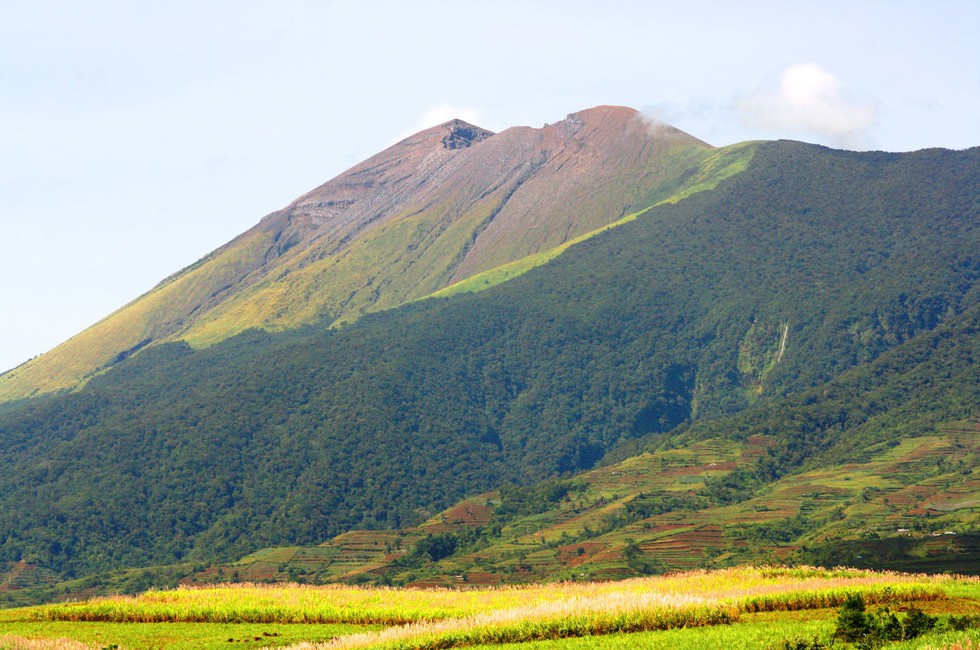 About Mount Kanlaon:
About Mount Kanlaon:
 About Mount Kanlaon:
About Mount Kanlaon:- It is a stratovolcanolocated in the north-central portion of the island of Negros, Philippines.
- It is the highest mountain on the island of Negros and the 42nd tallest peak on an island in the world.
- It is one of the active volcanoes in the Philippines and part of the Pacific Ring of Fire.
- The volcano comprises a number of pyroclastic cones and craters.
- The summit of Kanlaon volcano at an elevation of 2435 m contains a broad, elongated caldera with a crater lake, with a smaller but more active crater to the south.
- The base of Kanlaon covers an area of 30 km x 14 km.
- It is underlain by tropical volcanic materials composed of sheeted lava flows, lahar deposits, airfall tephra, and apron pyroclastic materials.
- It is biologically diverse; and home to a number of species of Flora and Fauna.
- The slopes are also headwater catchments of major river systems on the entire Negros Island.
- Kanlaon has erupted several times since 1886 and typically comprise phreatic explosions of small to moderate size that produce minor ashfalls near the volcano.
What is a Phreatic Eruption?
- A phreatic eruption is made up of steam-driven explosions that occur when water beneath the ground or on the surface is heated by volcanic activity.
- The water, once heated, begins to boil or can even flash straight to steam, causing an explosion.
- Phreatic eruptions can often precede, accompany, or follow a more traditional volcanic eruption.
- Groundwater can often be found near volcanic vents, and as the magma rises to the surface of the earth, it heats the groundwater and causes these phreatic eruptions.



























































































































































.png)
.png)
.png)
.png)
.png)


.png)
.png)
.png)





.png)
.png)






.png)
.png)
.png)
.png)
.png)
.png)
.png)
.png)
.png)

.png)







.png)
.png)


.png)
.png)
.png)


.png)

.png)
.png)





.jpg)

.png)
.png)


.png)

.png)
.png)
.png)

.jpg)

.jpg)


.png)

.png)
.png)
.png)
.png)
.png)
.png)
.png)
.png)
.png)
.png)




.png)

.png)





.png)
.png)
.png)
.png)
.png)
.png)
.png)
.png)
.png)
.png)
.jpg)
.jpg)

.png)
.png)
.png)
.png)
.png)
.png)
.png)
.png)
.png)
.png)
.png)
.png)
.png)
.png)
.png)
.png)
.png)
.png)
.png)
.png)
.png)
.png)



.png)
.png)

.jpg)
.jpg)


.jpg)
.jpg)
.jpg)
.jpg)
.jpg)

.jpg)








.jpg)
.jpg)
.jpg)
.jpg)
.jpg)

















.jpg)
.jpg)







.jpg)


















.jpg)
.jpg)






























































































.jpg)
.jpg)


























.jpg)

.jpg)










.jpg)








.jpg)




.jpg)










.jpg)


















.jpg)












































.jpg)














.jpg)
.jpg)
.jpg)





.jpg)

.jpg)
.jpg)





































































.jpg)


































.jpg)
.jpg)
















































.jpg)












.jpg)


.jpg)




.jpg)
.jpg)
.jpg)

.jpg)
.jpg)
.jpg)
.jpg)

.jpg)
.jpg)
.jpg)

.jpg)
.jpg)
.jpg)
.jpg)
.jpg)
.jpg)
.jpg)
.jpg)

.jpg)


.jpg)
.jpg)
.jpg)
.jpg)
.jpg)
.jpg)
.jpg)
.jpg)
.jpg)
.jpg)











.jpg)
.jpg)





.jpg)
.jpg)
.jpg)
























.jpg)
























.jpg)









.jpg)
.jpg)







.jpg)
.jpg)









































.jpg)
.jpg)
.jpg)
.jpg)
.jpg)

.jpg)
.jpg)
.jpg)
.jpg)
.jpg)


.jpg)
.jpg)
.jpg)
.jpg)
.jpg)

.jpg)
.jpg)
.jpg)
.jpg)
.jpg)
.jpg)
.jpg)
.jpg)
.jpg)
.jpg)
.png)

.png)
.png)

.png)
.png)
.png)
.png)


.jpg)
.jpg)

.jpg)
.jpg)
.jpg)

.png)
.png)
.png)
.png)
.png)
.png)
.png)

.png)
.png)
.png)
.png)
.png)
.png)
.png)
.png)
.png)
.png)





































































-min.png)



.png)




.png)








































